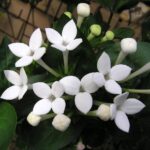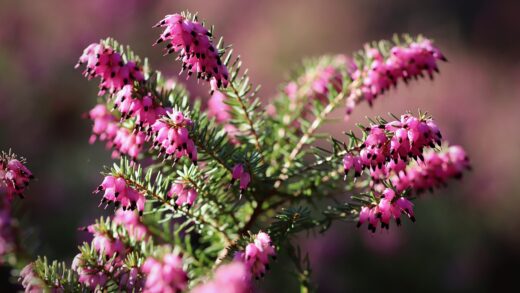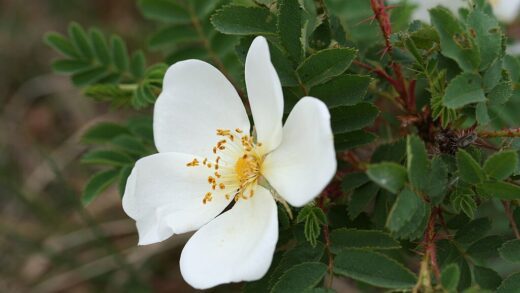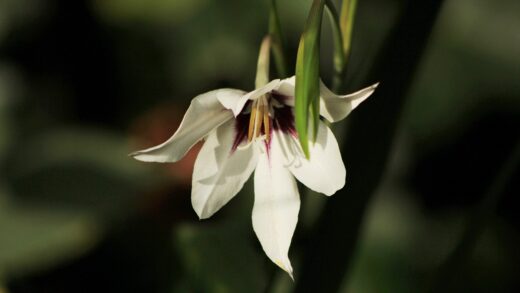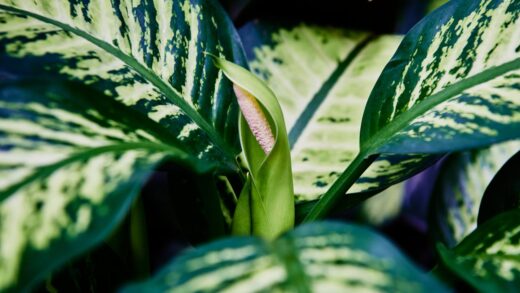Ensuring the successful overwintering of the everlasting pea is a crucial aspect of its care, allowing this resilient perennial to survive the cold months and return with vigor year after year. While it is an inherently hardy plant, capable of withstanding significant drops in temperature, a few simple preparatory steps in the autumn can make a substantial difference in its health and performance the following spring. Proper end-of-season cleanup, providing adequate insulation for the root system, and understanding the plant’s dormancy period are the key components of a successful winter care strategy. These actions protect the plant’s vital crown and roots from the harshest winter conditions.
The overwintering process for the everlasting pea begins in the late autumn, after the plant has finished its flowering cycle and the foliage has been killed back by the first hard frosts. This natural die-back is a signal that the plant is entering its dormant period. During this phase, all of the plant’s energy is stored in its extensive underground root system, which is the part that needs to be protected throughout the winter. The top growth, which consists of the dead stems and leaves from the past season, has served its purpose and should now be removed.
A thorough cleanup is the most important first step in preparing the plant for winter. Using a clean, sharp pair of pruning shears or loppers, cut all of the dead stems and foliage back to within a few inches of the ground. This action serves several important purposes. It tidies up the garden space, removes any potential overwintering sites for pests or fungal diseases like powdery mildew, and makes it easier to apply a protective layer of mulch directly over the plant’s crown.
Once the top growth has been cleared away, the focus shifts to protecting the root system. The everlasting pea is generally hardy in USDA zones 5 through 9, but even in these zones, the crown of the plant can be vulnerable to damage from repeated freezing and thawing cycles, which can heave the plant out of the ground. Protecting the crown and the shallowest roots from extreme cold and temperature fluctuations is the primary goal of winter preparation, ensuring the plant’s energy stores remain safe until spring.
It is important to cease all fertilization well before the first frost, typically by late summer. Applying fertilizer late in the season can stimulate new, tender growth that will not have enough time to harden off before the cold weather arrives. This vulnerable new growth is highly susceptible to frost damage and can be an entry point for diseases. Allowing the plant to naturally slow down and prepare for dormancy is a critical part of its annual cycle.
The importance of mulching
Applying a layer of mulch after the autumn cleanup is the single most effective action you can take to protect the everlasting pea over winter. Mulch acts as a layer of insulation for the soil, regulating its temperature and shielding the plant’s roots and crown from the most extreme cold. It helps to prevent the damaging freeze-thaw cycles that can disrupt the root system and provides a more stable environment for the dormant plant.
The best time to apply winter mulch is in late autumn, after the ground has frozen lightly but before the coldest part of winter sets in. Applying it too early, when the ground is still warm, can trap heat and moisture, potentially leading to crown rot. Waiting for a light freeze ensures the plant is fully dormant. A generous layer of two to four inches of organic mulch should be spread over the crown of the plant and the surrounding root zone.
A variety of organic materials can be used for winter mulch, with light, airy materials being the most effective insulators. Shredded leaves, pine straw, clean straw, or even chopped-up cornstalks are excellent choices because they trap air, which provides insulation, and they do not compact heavily over the winter. Avoid using heavy, dense materials like wet leaves or thick layers of compost right over the crown, as these can hold too much moisture and promote rot.
In the spring, as the threat of hard frosts passes and new growth begins to emerge, it is important to gradually remove the winter mulch. Rake the mulch away from the crown of the plant to allow the soil to warm up and to give the new shoots space to grow unimpeded. This old mulch can be added to the compost pile or spread around the base of the plant later in the season as a summer mulch to conserve moisture and suppress weeds.
Winter care in different climates
The specific overwintering strategy for the everlasting pea can be adjusted based on the severity of the winters in your particular climate zone. In milder climates, such as USDA zones 8 and 9, the plant may not require any special winter protection at all. The ground rarely freezes deeply, and the plant’s natural hardiness is more than sufficient to see it through the winter. In these areas, the primary reason for cutting back the dead foliage in autumn is simply for garden tidiness and sanitation.
In the middle of its hardiness range, roughly zones 6 and 7, applying a protective layer of winter mulch is a highly recommended practice. While the plant will often survive without it, the mulch provides an extra layer of insurance against an unusually cold winter or a winter with little insulating snow cover. Snow itself is an excellent insulator, but its presence is not always reliable. A layer of mulch ensures the plant’s roots are protected regardless of the amount of snowfall.
In the colder end of its range, particularly in USDA zone 5, providing winter protection is essential for the plant’s reliable survival. In these regions, a thicker layer of mulch, perhaps four to six inches deep, should be applied after the ground freezes. It is also beneficial to choose a planting site that offers some natural protection, such as a location near the foundation of a house or a south-facing wall, which can create a slightly warmer microclimate.
For gardeners in climates colder than USDA zone 5, successfully overwintering the everlasting pea in the ground is very challenging and often not possible. In these areas, the plant might be treated as an annual or grown in a large container. Container-grown plants can be moved into a protected but unheated location, such as a garage, shed, or cold greenhouse, for the winter months. The goal is to keep the roots frozen or consistently cold but shielded from the harshest temperatures and drying winds.
Container-grown plants
Overwintering an everlasting pea that is grown in a container requires a different approach than for garden-grown plants. The soil in a pot is exposed to cold air from all sides, causing it to freeze much faster and more deeply than the ground. This makes the roots far more vulnerable to cold damage, and a plant that is perfectly hardy in the ground may not survive the winter in an unprotected pot, even within its normal hardiness zone.
The most reliable method for overwintering a container-grown plant is to move it into a sheltered, unheated location for the duration of the coldest months. An attached garage, a basement, a shed, or a cold frame are all suitable options. The location should remain cold enough to keep the plant dormant but should not experience the extreme temperature lows of the outdoors. The plant will not need light during this period as it is dormant.
Before moving the container indoors, it is still advisable to cut back the dead top growth. The soil in the pot should be checked periodically throughout the winter, perhaps once a month. It should not be allowed to dry out completely, as this can kill the roots. Provide just a small amount of water occasionally to keep the soil barely moist. Over-watering must be avoided, as this will lead to root rot in a dormant plant.
If moving the container is not feasible due to its size or weight, you can attempt to insulate it in place. Group the container together with other large pots to create a larger thermal mass. Wrap the entire pot, or group of pots, with bubble wrap, burlap, or old blankets to provide insulation. Piling loose leaves or straw around the base and sides of the pot can also offer significant protection. The goal is to insulate the root ball from the harsh, fluctuating winter temperatures.



